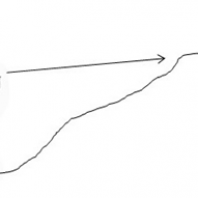Anthropogenic structures associated with electric power transmission have been implicated as a world-wide conservation threat for the subfamily Tetraonidea (grouse). The U.S. Fish and Wildlife Service recommended the use of conservation buffer zones as best management practices (BMPs) when power lines are placed in sage-grouse seasonal habitats to mitigate potential impacts. However, because data are lacking regarding the potential impacts of power lines on sage-grouse, the recommended BMPs buffer zones differ by federal and state agencies. We conducted a viewshed and other spatial analyses to determine if sage-grouse distributions (i.e., nest and brood locations, and lek persistence) recorded in Utah from 1998-2013 were influenced by distance to electric power transmission and distribution lines, ancillary roads, or other factors. To our knowledge, this is the first landscape-level comparison examining the relationship between types of power lines and their influence on known sage-grouse breeding distributions.
